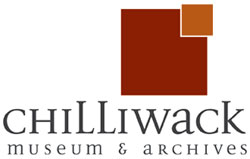
What are Hops?
Hops are a global commodity with a history that is rich, textured and largely untold. For centuries, oils that have been extracted from the hop plant have been used as an essence in medicinal, food and personal care products. However, hops are more widely know for their role in the beer-making process. There are more than 200 active essential oils that can be extracted from the hop cone or flowers. These oils provide beer with its aroma and flavour.
Hops in Chilliwack, British Columbia
From 1893, when Henry Hulbert began the Hulbert Hop Farm, to October 1997, when the John I. Haas Company closed its doors for the last time, hop growing was a stable and successful agricultural enterprise in the eastern Fraser Valley. Hop farms were centered in Sardis, one of the communities that is part of the City of Chilliwack.
The fascinating history of this industry is tied to migrant workers, many cultural groups, and events like prohibition and world wars. The Chilliwack chapter of this history is a microcasm of similar stories from all over the world.
The Hop
The object of the harvest is the hop cone. Located inside the hop cone, at the base of brachts or brachioles, are the lupulin glands that are microscopic, conical shaped glands. More than 200 active essential oils, found in the lupulin glands, are used to provide beer with its taste, smell, foam, flavour and physical stability. It is this cone that is dried into whole leave hops, pelletized, or the essential oils are extracted and used in the brewing process. In Sardis, East Kent Goldings, Willamettes, Fuggles, Brambling Crosses and Brewer's Gold were the commen types of hops that were grown. These are aroma of finishing hops, added to the beer near the end of the brewing process.
The smell of hops has been described as, spicy, spruce-like and "sweetly odiferous". An 1894 article in the Chilliwack Progress describes the hop as "a pleasantly scented flower whose destiny it is to flavour the beverage that inebriates and causes much grief when taken in excess, but which, under the title of John Barleycorn, cheerers and enlivens when taken in moderation." (Chiliwack Progress, Sept. 26, 1894).
Other Uses of Hops
A resurgence in hops for alternative uses to brewing is on the rise. Long prized for their medicinal and flavouring properties, hops can be found in everything from teas to bread, while chefs have found a new appreciation for young hop shoots (hop asparagus) in recipes. Makers of soap, shampoo and lotions have found that hops add a unique quality to their products. In addition, the organic quality of the hop flakes with their delicate pale green colour add a special touch to an outdoor wedding as confetti.
Online exhibit (c) Chilliwack Museum and Archives 2008. About the Exhibit
![]()
